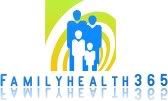
On the first day of basketball practice, Elizabeth Pearlman passed out with a heart condition, but an AED saved her life. “What if it happened somewhere where an AED wasn’t available?” she asked.
Chicago native Elizabeth Pearlman was taking part in a conditioning drill with her college basketball team last October when she collapsed.
If an automated external defibrillator -- an AED is a portable device that can detect cardiac arrhythmias and shock the heart back into rhythm -- hadn't been available, she likely would have died. Pearlman hopes that by sharing her story she might raise awareness -- and ultimately help save others.
"It was the first day of practice," the Aurora University senior said. "At the end of practice, we were doing sprints. On the last sprint, I suddenly felt like I had to stop running. Did I feel faint? No. I just knew that I didn't feel right. The next thing I saw was the floor coming to my face."
Fortunately, Aurora head athletic trainer Terry Smith was at the practice. He saw Pearlman go down. Was she just tired? He doubted that. He sensed something was wrong, and went directly over to her. He saw that she was having a hard time breathing and was hyperventilating. Then he saw her eyes roll back in her head.
"It went downhill real quick," Smith said.
He told one coach to call 911, and told another to get an AED. He immediately began performing CPR. But Pearlman didn't respond to the CPR. Smith had to use the AED to restore her heart rhythm. He had to shock her twice.
"I don't know how much time passed," Smith said. "But time flew. Then the ambulance came."
Pearlman, 21, remembers being in a state of euphoria before regaining full consciousness in the ambulance.
"I was in a great place -- it was deep and solid," she said. "Then I started feeling pricks and pokes, and I woke up to [the paramedics] putting needles in my veins."
Pearlman would spend the next week in the intensive care unit. She would learn that she suffers from a previously undiagnosed genetic heart disease called arrhythmogenic right ventricular dysplasia. She also had suffered a pulmonary embolism. In the months that followed she would undergo several medical procedures, including having an implantable cardioverter defibrillator, or ICD, put in her chest. She has become an expert on her heart condition. She knows she had a close call. Make that a very close call.
"If not for the AED, you're dead," she said. "Growing up, I played basketball in some pretty tough city neighborhoods. I played pick-up games with guys, and we were always running. What if it had happened then? What if it had happened somewhere where an AED wasn't available?"
If it were up to organizations such as the American Red Cross, you would find an AED on every playground and in every home. Because CPR alone isn't always enough. AEDs are not useful for every arrhythmia, but they can detect two that are frequently implicated in sudden cardiac arrest, ventricular fibrillation and ventricular tachycardia.
"If you have an AED, it can increase your chance [of survival]," said Theresa Rees, manager of instruction and development for the Red Cross of Greater Chicago.
Fortunately, you can find AEDs in more places than ever before. They're small, light and easy to use.
"They are in all sporting facilities, government buildings, airports, schools, police cars, ambulances [and other places, as well]," Rees said.
Even those without training should not hesitate to use one in a crisis. But ideally everyone would learn from a professional.
Paramedic Lisa Krch, the CPR training coordinator for Advocate Christ Medical Center's Center for Prehospital Care in southwest suburban Oak Lawn, has taught thousands of people how to use an AED.
"You can teach anyone to use them," Krch said. "I've taught Boy Scouts -- 8-year-old kids. You just follow the prompts. Turn the machine on, then one prompt at a time. It won't go to the next step until you've completed the step you're on."
Advocate Christ has for the past two years gone into high schools to teach CPR, AED and basic first aid.
"Last year alone we taught 1,000 people," Krch said. "I wish they would make it a requirement of high school graduation that you need to know CPR and AED. It's less than eight hours, and it could save a life."
Twelve months ago, Pearlman's life changed drastically. She can no longer play basketball -- her heart condition won't allow it. But she's on target to graduate with her class, and she hopes to attend veterinary school. She's not only alive, she is full of life. Spread the word.
"AEDs are very, very important," she said.
suntimes.com








0 comments
Post a Comment
[▼/▲] More Emoticons